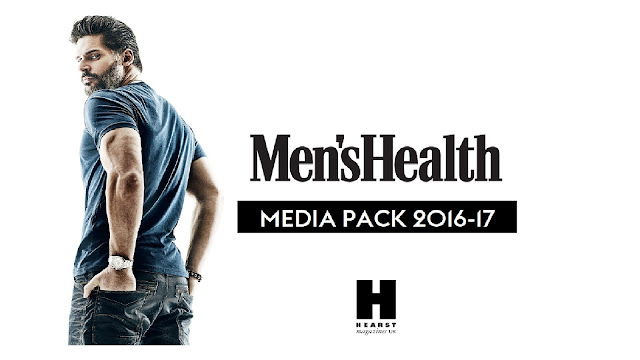Newspapers: News Values
The following list is adapted from their work:
Immediacy: has it happened recently?
Familiarity: is it culturally close to us in Britain?
Amplitude: is it a big event or one which involves large numbers of people?
Frequency: does the event happen fairly regularly?
Unambiguity: is it clear and definite?
Predictability: did we expect it to happen?
Surprise: is it a rare or unexpected event?
Continuity: has this story already been defined as news?
Elite nations and people: which country has the event happened in? Does the story concern well-known people?
Negativity: is it bad news?
Balance: the story may be selected to balance other news, such as a human survival story to balance a number of stories concerning death.
Read Media Factsheet 76: News Values and complete the following questions/tasks.
1) Come up with a news story from the last 12 months for each of the categories suggested by Harriss, Leiter and Johnson:
- Conflict
The EU leaders reject Theresa May's Chequers plan surrounding Brexit.
http://www.theweek.co.uk/brexit/95003/chequers-plan-explained-brexit-white-paper
http://www.theweek.co.uk/brexit/95003/chequers-plan-explained-brexit-white-paper
- Progress
The Nobel Prize in Physics has been awarded to a woman for the first time in 55 years. Her name is Donna Strickland.
- Disaster
The 2018 Atlantic Hurricane season included many hurricanes and caused considerable damage.
- Consequence
At least 50 people have died after an oil tanker collided with a car on a major road in the west of the Democratic Republic of Congo.
- Prominence
The Royal Family, in particular, Meghan Markle and Prince Harry's marriage.
- Novelty
In the past few weeks, 4 Iraqi beauty influencers have been shot dead.
2) What example news story does the Factsheet use to illustrate Galtung and Ruge's News Values? Why is it an appropriate example of a news story likely to gain prominent coverage?
The factsheet uses the story of Lisa Head- a 29 year old British servicewoman who died after an Afghan bomb blast. This is an appropriate example of a news story that is likely to gain prominent coverage because of the fact that it covers many news values. Proximity- because she is British. Intensity- because it is more unusual for a female officer to be killed. Continuity- because of the ongoing stories regarding Afghanistan.
3) What is gatekeeping?
Gatekeeping is the process of filtering what news ends up on the newspapers and to the public. This process is usually done by an editor, but it can also refer to how journalists selectively choose their words and images for a news story, resulting in a certain opinion to be expressed. Ultimately, gatekeeping is a way for news industries to control what kind of information their readers are obtaining.
4) What are the six ways bias can be created in news?
- Bias through selection and omission- specific details are included while others are disregarded, creating a certain opinion.
- Bias through placement- Stories at the front of the newspaper are seen a more important as stories at the back, the editor has purposely placed them there to intrigue a reader.
- Bias by headline- bold and large part of the newspapers that readers are forced to see; can make or break a story.
- Bias by photos, captions, and camera angles- heavily influence the public’s perception of a person or event.
- Bias through use of names and titles- Labels and titles used to describe people or places. A name suggests that this person/place is important and everyone should know about it.
- Bias by choice of words- People can be influenced by the use of positive or negative words with certain connotations as well as the tone the writer is using.
5) How have online sources such as Twitter, bloggers or Wikileaks changed the way news is selected and published?
The internet has redefined news. People are now able to document what they see and share their own news in an instant with social media platforms such as Twitter and Blogger.
Wikileaks is different in the fact that it is essentially a library for everything that happens in the world. It is all raw materials, meaning that people can read it in any way they please, without editors of massive news industries gatekeeping the stories. However, this site is not known to the average person and is mostly used by journalists to gather their sources for their own biased stories.
6) Complete the task on the last page of the Factsheet regarding Sky News and Twitter:
- What does this reveal about how Sky views Twitter as a news source?
- What does it say about how news is being produced?
- What role does the audience have in this process?
- Why might this be a problem for journalistic standards?
States that site cannot be reached.
In my opinion, I believe that the digital age has changed Galtung and Ruge's news values in terms of:
1) Time span- it becomes harder for newspapers to find news they can publish as people are already updated with news in the same moment via social media.
2) Unexpectedness- as there is very little that can be unexpected in today's time.
However, their news values can still apply to news stories and are still very useful.
8) How would you update them for 2018? Choose TWO of Galtung and Ruge's news values and say how they have been affected by the growth of digital technology.
E.g. Immediacy is more important than ever due to news breaking on Twitter or elsewhere online. However, this in turn changes the approach of other news sources such as newspapers as the news will probably already be broken so different angles might be required. Newspapers now contain more comment or opinion rather than the breaking story.
Continuity- Social media usually always updates people on news stories. This is particularly true for soft news and entertainment news. This means that newspapers don't have the chance to report this as they lag behind technology.
Socio-cultural- I believe that newspapers tend to lag with the digital age in terms of what is deemed socially acceptable. This is probably due to the fact that older people are in charge of editing the newspapers whereas younger people run most of the internet. For example, the online age has become very accepting of the LGBT community and, in particular, males wearing makeup. However, newspapers tend to not talk about these topics and may even be against them.
Continuity- Social media usually always updates people on news stories. This is particularly true for soft news and entertainment news. This means that newspapers don't have the chance to report this as they lag behind technology.
Socio-cultural- I believe that newspapers tend to lag with the digital age in terms of what is deemed socially acceptable. This is probably due to the fact that older people are in charge of editing the newspapers whereas younger people run most of the internet. For example, the online age has become very accepting of the LGBT community and, in particular, males wearing makeup. However, newspapers tend to not talk about these topics and may even be against them.
 |
| Although from 2007, this may still be the case for some newspapers. |



Comments
Post a Comment